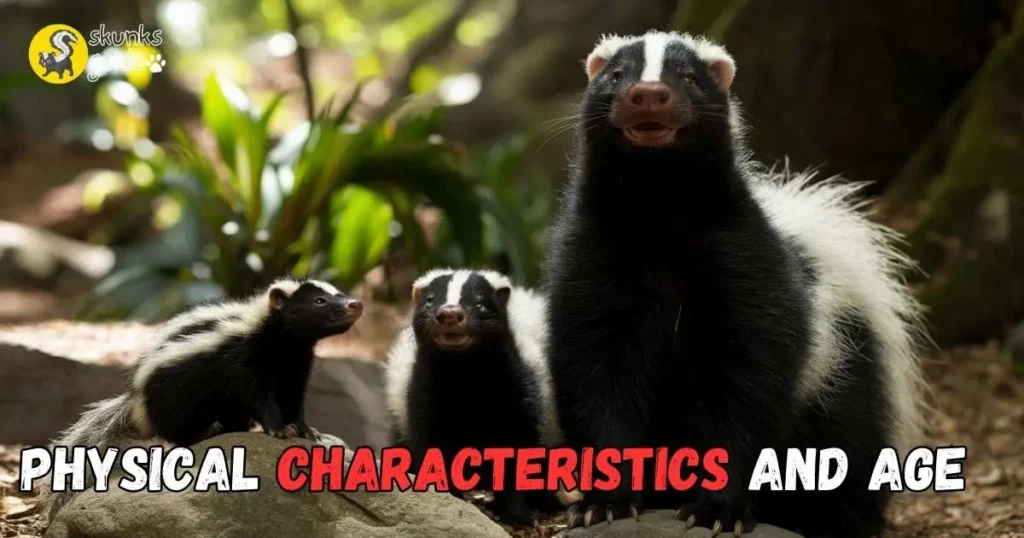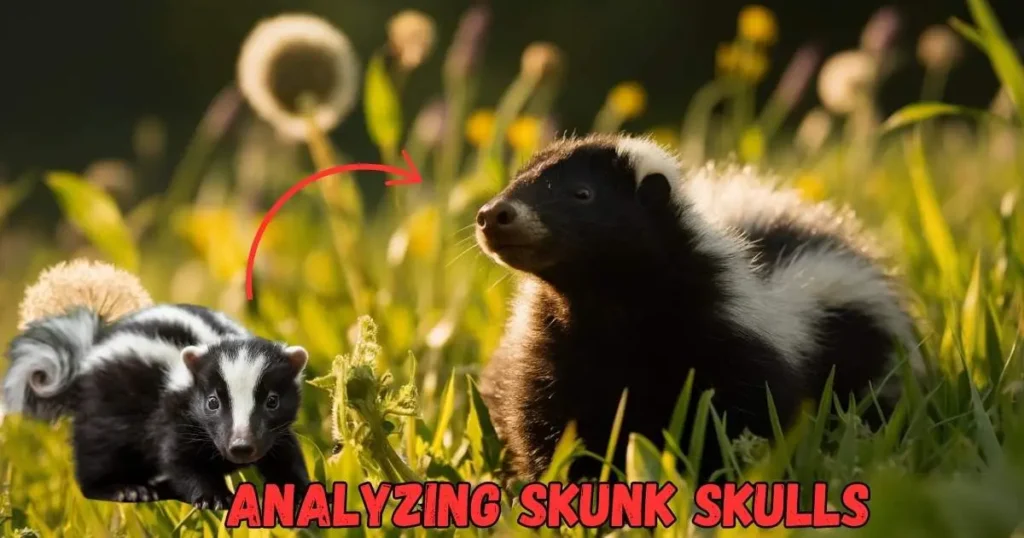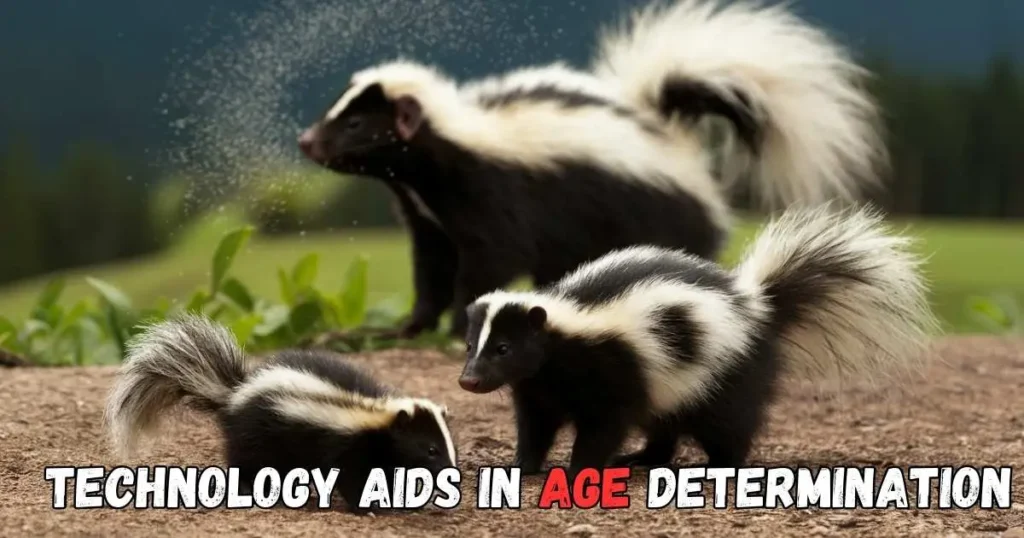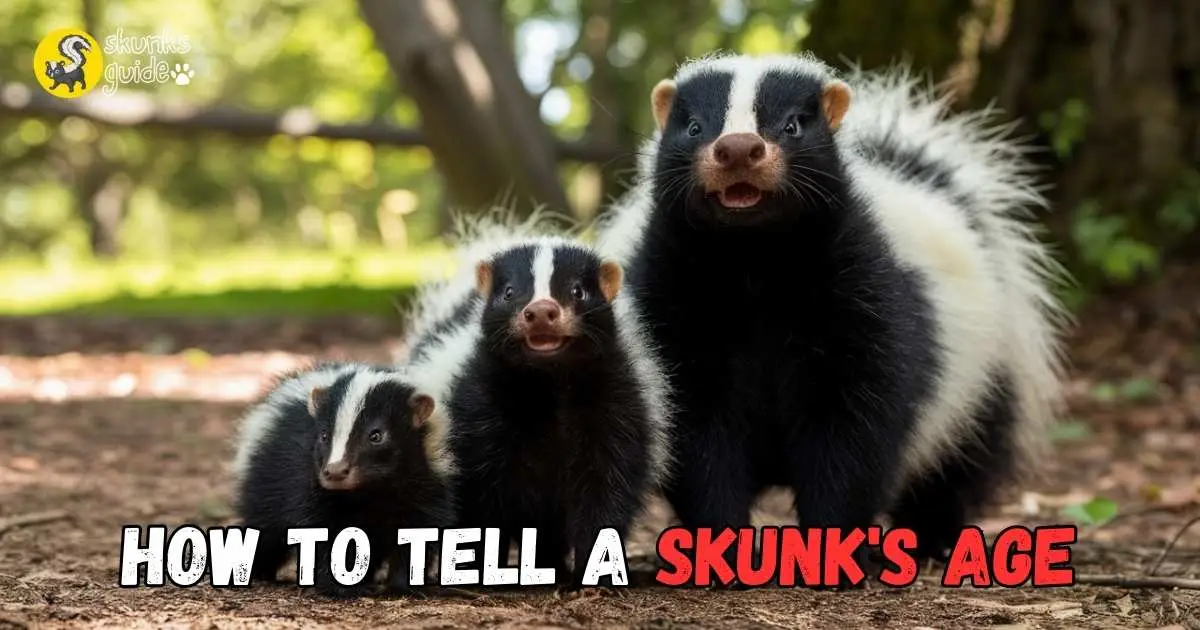How to Tell a Skunk’s Age
You can actually figure it out by looking at their teeth and body size. Younger skunks have bright white, sharp teeth and are slimmer than older ones. Based on my skunk research in the wild, I’ve uncovered some interesting ways to identify their age. Read on to find out how you can spot these signs too!
Introduction To Skunk Age Estimation
Estimating a skunk’s age can help in wildlife studies. Understanding their life cycle aids in conservation efforts. Skunks have distinct physical traits that change as they grow. This guide explains how to identify a skunk’s age accurately.
Importance Of Age Identification
Identifying the age of skunks holds great significance for several reasons:
- Wildlife Management: Age data helps in managing skunk populations.
- Health Assessments: Older skunks may show different health issues.
- Behavioral Studies: Age influences skunk behavior and social structures.
- Conservation Efforts: Aids in the protection of endangered species.
Challenges In Aging Skunks
Aging skunks is not always straightforward. Several challenges complicate the process:
- Physical Variability: Skunks vary in size and color.
- Limited Reference Data: Few studies detail age-related traits.
- Environmental Factors: Diet and habitat can alter appearance.
- Behavioral Differences: Age affects the skunk’s behavior.
Understanding these challenges helps improve age estimation accuracy. Accurate estimations aid in effective skunk management and conservation.
Physical Characteristics And Age
Understanding a skunk’s age can be fascinating. Physical characteristics reveal much about their life stage. Two main traits to observe are fur color changes and size growth patterns.

Fur Color Changes
Skunks undergo noticeable changes in fur color as they age. Young skunks start with a soft, fluffy coat. Their fur is often gray or brown.
As they mature, their fur becomes darker and shinier. Adult skunks usually have a distinct black and white pattern. This change is vital for identifying their age.
| Age | Fur Color |
|---|---|
| Juvenile (0-3 months) | Gray or Brown |
| Young Adult (4-12 months) | Darker with some white |
| Adult (1 year and older) | Distinct Black and White |
Size And Growth Patterns
Size can also indicate a skunk’s age. Skunks grow rapidly during their first few months. They typically weigh only a few ounces at birth.
By three months, they can weigh up to 3 pounds. Adult skunks usually weigh between 6 to 14 pounds.
Here are some key size milestones:
- Birth: 2-4 ounces
- 3 months: Up to 3 pounds
- 1 year: 6-14 pounds
Observing these growth patterns helps determine their age accurately.
Behavioral Indicators Of Age
Understanding a skunk’s age can be fascinating. Observing their behavior provides clues. Different ages show distinct actions and habits. Recognizing these can enhance your wildlife experience.
Juvenile Playfulness
Juvenile skunks display a lot of playfulness. They often engage in playful antics. Here are key signs:
- Chasing each other around.
- Rolling on the ground.
- Exploring their surroundings with curiosity.
Young skunks are not shy. They may approach humans. Their playful nature makes them easy to spot. You might see them playing with leaves or small objects.
Adult Mating Behaviors
Adult skunks exhibit specific mating behaviors. This usually occurs in late winter or early spring. Look for these signs:
- Increased vocalizations, especially during the night.
- More aggressive interactions among males.
- Frequent scent marking to attract mates.
Adults are less playful. They focus on finding mates. Their behaviors change during mating season. Observing these traits can help determine a skunk’s age.
Dental Examination Techniques
Understanding a skunk’s age requires careful observation of its teeth. Dental examination techniques are essential for accurate age determination. Two main aspects help with this: tooth wear and eruption patterns, and dental formulas.
Tooth Wear And Eruption Patterns
Toothwear provides insights into a skunk’s age. Older skunks have more worn teeth. Check for these signs:
- Incisor wear: Smooth edges indicate age.
- Canine length: Longer canines suggest younger skunks.
- Molars: Look for deep grooves; they wear down with age.
Eruption patterns also matter. Skunks have specific tooth eruption timelines:
| Age | Tooth Eruption |
|---|---|
| 0-6 months | Deciduous teeth appear. |
| 6-12 months | Permanent incisors erupt. |
| 1-2 years | Canines and premolars emerge. |
| 3-5 years | Molars fully erupt. |
| 5+ years | Significant wear on all teeth. |
Using Dental Formulas
Dental formulas provide a systematic way to assess skunk age. The formula shows how many teeth a skunk has at different ages. Here’s a simple breakdown:
- Deciduous teeth: 28 teeth total.
- Adult teeth: 32 teeth total.
Count the teeth carefully. Compare the count with the expected dental formula:
Deciduous: 2(I 3/3, C 1/1, P 3/3) = 28
Permanent: 2(I 3/3, C 1/1, P 3/3, M 1/2) = 32
Understanding these patterns helps determine age accurately. Regular dental checks aid in monitoring skunk health.
Analyzing Skunk Skulls
Understanding a skunk’s age can be fascinating. One effective method is by analyzing their skulls. The skull offers clues about age through its size and the closure of sutures. Let’s dive into the specifics!

Skull Size And Suture Closure
The size of a skunk’s skull changes with age. Young skunks have smaller skulls. As they grow, their skulls increase in size. This change provides a clear indicator of their age.
Suture closure is another important factor. Sutures are the lines where skull bones meet. In younger skunks, these sutures are open and visible. As skunks age, these sutures gradually close.
- Young Skunks: Open sutures, smaller skull size.
- Adult Skunks: Closed sutures, larger skull size.
Comparing Skulls Across Age Groups
Comparing skulls from different age groups helps identify age. Below is a simple table showing key differences:
| Age Group | Skull Size | Suture Status |
|---|---|---|
| Juvenile | Small | Open |
| Sub-Adult | Medium | Partially Closed |
| Adult | Large | Closed |
Understanding these features helps in estimating age accurately. This method is essential for wildlife studies. It provides insights into skunk populations and their health.
The Role Of Genetics In Aging
Understanding how genetics influences a skunk’s age helps scientists. Genetic factors can reveal a lot about lifespan and health. Specific markers in DNA indicate various life stages. These markers help identify aging signs in skunks.
Genetic Markers Of Age
Genetic markers serve as indicators for aging. Here are some key markers:
- Telomeres: They shorten as skunks age.
- Gene mutations: Certain mutations appear more in older skunks.
- DNA methylation: Changes in this process can signal age.
Researchers study these markers to estimate age. This knowledge assists in wildlife management and conservation efforts.
Studying Familial Lineages
Familial lineages help in understanding genetic aging. Skunks from the same family show similar aging traits. Here’s how studying these lineages helps:
- Identifying common genetic traits.
- Tracking age-related diseases.
- Understanding lifespan variations among families.
By analyzing family trees, scientists gain insights. They can predict aging patterns and behaviors in skunks. This information benefits wildlife conservation strategies.
Life Stage-specific Diet Clues
Understanding a skunk’s diet can reveal its age. Each life stage shows distinct dietary preferences. Young skunks eat differently than adults. Observing these dietary habits offers clues about their age.
Dietary Preferences By Age
Skunks change their eating habits as they grow. Here are the main age groups and their diets:
| Age Group | Dietary Preferences |
|---|---|
| Young (< 6 months) | Mother’s milkSoft insectsFruits like berries |
| Juvenile (6 months – 1 year) | More insectsSmall rodentsVegetation |
| Adult (> 1 year) | Omnivorous dietFruits and vegetablesMeat and carrion |
Evidence From Scat Analysis
Scat analysis reveals a lot about a skunk’s diet. Examining scat helps determine age. Different age groups leave distinct scat characteristics.
- Young Skunks: Smaller scat, mostly undigested food.
- Juvenile Skunks: Scat includes more insect parts and vegetation.
- Adult Skunks: Larger scat with a mix of meat and plant material.
Identifying these clues can help estimate a skunk’s age accurately.
Seasonal Age Clues
Understanding a skunk’s age can be tricky. Nature provides clues based on seasons. Observing these clues helps you estimate their age.
Breeding Cycles And Age
Skunks have specific breeding cycles. These cycles indicate their age. Here are key points:
- Spring Breeding: Skunks breed in late February.
- Gestation: Pregnancy lasts about 60 to 75 days.
- Kit Arrival: Kits are born in late April to May.
Young skunks are usually around 3 months old by summer. By this age, they begin exploring. Adults breed again in spring.
Hibernation Patterns
Skunks do not hibernate like some animals. They enter a state of torpor. This affects how you can tell their age.
| Season | Behavior | Age Clue |
|---|---|---|
| Winter | Inactive, seeking shelter | Older skunks stay hidden longer |
| Spring | Emerging for food | Young skunks are more active |
| Summer | Foraging and playing | Young skunks are seen with adults |
| Fall | Preparing for winter | Older skunks store food |
In spring, you can see young skunks. They are playful and curious. Older skunks may be more cautious.
Technology Aids In Age Determination
Determining a skunk’s age can be challenging. Modern technology offers new methods to make this easier. Using advanced tools, scientists can gather precise data. This section explores two key technologies: radiographic imaging and age estimation software.

Radiographic Imaging
Radiographic imaging is a powerful tool for age determination. It uses X-rays to look inside a skunk’s body. This method helps in examining the growth of bones and teeth.
- Bone Density: Older skunks have denser bones.
- Tooth Wear: Wear patterns on teeth indicate age.
- Growth Plates: Closed growth plates signal maturity.
Veterinarians and researchers often use this method. It provides quick and accurate results without harming the animal.
Advances In Age Estimation Software
Age estimation software has revolutionized how we determine a skunk’s age. This software analyzes various biological markers.
| Feature | Description |
|---|---|
| Data Input | Users can input various measurements. |
| Machine Learning | Software learns from data to improve accuracy. |
| User-Friendly Interface | Simple design makes it easy for everyone. |
This technology allows for fast assessments in the field. It helps researchers make informed decisions quickly.
Field Studies And Citizen Science
Field studies and citizen science play a vital role in understanding skunk populations. Both methods help researchers gather important data on skunk age. Engaging the public encourages community involvement in wildlife research. This effort leads to better conservation strategies for skunks.
Participating In Wildlife Research
Anyone can participate in wildlife research. Here are ways to get involved:
- Join local wildlife groups.
- Attend workshops on skunk identification.
- Volunteer for field studies.
- Report skunk sightings through online platforms.
By participating, you help scientists track skunk populations. Your observations contribute valuable data about skunk age and health.
Contributions To Skunk Age Data
Citizen scientists collect various types of data. This information helps researchers estimate skunk age. Important contributions include:
| Physical | Description |
|---|---|
| Physical Measurements | Length and weight of skunks help estimate age. |
| Behavioral Observations | Notes on mating and feeding behaviors provide insights. |
| Habitat Information | Details about their environment assist in understanding populations. |
Your contributions enhance skunk age data significantly. They support conservation efforts and promote awareness of skunk habitats.
Conservation Implications
Understanding skunk age helps in conservation efforts. Age affects population dynamics and ecosystem balance. Knowing age groups aids in effective management strategies. This can lead to healthier habitats and populations.
Managing Skunk Populations
Effective management of skunk populations is vital. Here are key strategies:
- Monitor skunk populations regularly.
- Implement habitat restoration projects.
- Use non-lethal methods for population control.
- Educate the public about skunk behavior.
By maintaining balanced populations, we can reduce conflicts. Healthy skunk populations help control pests naturally.
Age Structure And Ecosystem Health
Age structure impacts ecosystem health significantly. Here’s how it works:
| Age Group | Role in Ecosystem | Impact on Population |
|---|---|---|
| Juveniles | Help disperse seeds and nutrients. | High mortality rate, lower population growth. |
| Adults | Reproduce and establish territory. | Stable population numbers. |
| Elderly | Contribute to knowledge transfer in groups. | Lower reproduction, potential decline in population. |
Understanding age structure assists in predicting population trends. Skunks play a role in soil health and pest control. Proper management ensures a balanced ecosystem.
Conclusion And Future Directions
Understanding a skunk’s age is vital for wildlife studies. It helps in conservation efforts. Accurate age assessment can enhance animal care and management. This section explores key methods and future possibilities in this area.
Summarizing Key Methods
Several methods exist to determine a skunk’s age. Each method has its own strengths.
| Method | Description | Accuracy |
|---|---|---|
| Dental Examination | Inspecting teeth for wear and growth patterns. | High |
| Physical Size | Measuring body length and weight. | Moderate |
| Fur Condition | Evaluating fur quality and grooming. | Variable |
| Behavioral Traits | Observing activity level and social interactions. | Moderate |
Each method can provide clues about a skunk’s age. Combining these methods improves accuracy.
Potential For New Discoveries
Research in wildlife biology continues to evolve. New technologies may offer better age assessment tools.
- Genetic Analysis: DNA testing could reveal age-related markers.
- Advanced Imaging: Techniques like X-ray may help assess skeletal growth.
- Field Studies: Monitoring skunk populations can lead to new insights.
Future studies may uncover more effective methods. Scientists aim to enhance wildlife management strategies. Improved age assessment can help protect skunk populations.
Frequently Asked Questions
How Do I Tell How Old A Baby Skunk Is?
To determine a baby skunk’s age, observe its size and fur. Newborns are hairless and tiny. By two weeks, they develop fur. At four weeks, they start to walk. By eight weeks, they are fully weaned and more active. Age estimation relies on these growth milestones.
What Is The Age Of A Skunk?
Skunks typically live up to 3 to 5 years in the wild. In captivity, they can live up to 10 years or more. Their lifespan varies based on habitat, diet, and threats from predators. Proper care can significantly extend a skunk’s life in a controlled environment.
How Big Is A 10 Week Old Skunk?
A 10-week-old skunk typically weighs between 2 to 4 pounds. They are around 10 to 12 inches long, excluding the tail. At this age, skunks are still growing and developing their distinctive features. Proper care ensures healthy growth during this crucial stage.
Conclusion
Understanding a skunk’s age can enhance your appreciation for these fascinating creatures. By observing physical characteristics and behavior, you can gain valuable insights. Remember, age affects their habits and health. With this knowledge, you can better appreciate their role in the ecosystem and ensure their protection in the wild.

